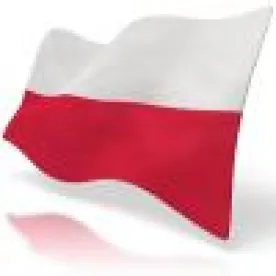According to one of the largest power producers and suppliers in Poland, Polska Grupa Energetyczna (PGE), Poland’s Baltic Sea has the capacity to generate 9 to 12GW of energy, ranking it second only to the North Sea, which already has about 13GW of offshore wind installed[1]. Despite offering good conditions for offshore wind development – waters are relatively shallow, have low salinity and have a lack of icing, and wave height is lower, tides are less pronounced and the distances to the shore are shorter than in the North Sea, resulting in lower project installation, operation and maintenance and grid infrastructure costs[2] – there are no offshore wind farms currently operating in Poland. However, 5GW is planned to be underway by 2030[3]. At present, 13 wind farm projects are under consideration with an ambition to generate 25% of Poland’s energy by offshore wind by 2040[4]. The developers of these projects include some of Europe’s energy heavyweights.
To support the development of offshore wind energy in Poland’s zone of the Baltic Sea, on 15 January 2020, the Ministry of State Assets published a draft Offshore Wind Act (the Act), which marked the beginning of the legislative process entailing a 30-day stakeholder feedback period (that ended on 13 February), which outlines more than 10GW of new capacity to be awarded Contract for Differences (CfDs) by 2028 over two phases: (1) 4.6GW of the most advanced projects (such as those with connection agreements/decisions) will be selected by Poland’s Energy Regulator between 2020 and 2022 with a strike price fixed by the government; (2) thereafter, 5.5GW of further capacity will be competitively auctioned across at least three tenders between 2023 and 2028. The period of support will be 25 years following first power generation (subject to the prior obtainment of a generation license).
The CFD support will be provided in form to cover negative balance (i.e. the difference between the market value of the energy and its value arising from the individual decision issued by the Regulator and since 2023 from the auction bid). Eligible projects must have a grid connection agreement, final environment and location permits, a construction timetable and a plan for participation of local equipment and services[5].There is currently no provision for a legal minimum local-content requirement, but developers would need to set and maintain a level on a project-by-project basis, according to the Polish Wind Energy Association (PWEA)[6]. While the Act does not stipulate any adverse consequences for failing to implement local content plans, investors will be required to report on progress in this area. Applications are to be submitted by 30 September 2022, in order to enable the first CFDs to be awarded by Poland’s Energy Regulator before the end of 2022. Projects that are awarded CFDs must start generating electricity within seven years[7].
The publication of the Act takes Poland one step closer to putting some of the country’s first turbines in the water, helping to close the potential capacity gap from the future declining amount of coal on the Polish Grid, as well as lowering CO2 emissions. The Polish government’s motivation to develop Poland’s offshore wind potential is driven by international climate change commitments, rising carbon prices and growing calls for cleaner air, as well a reduction on its use of coal. It is worth remembering that the Polish government has targeted a 15% share of renewables in its energy mix for 2020 and by 2030, an ambitious 21% share is the target. There are also other advantages to fulfilling the potential of the Baltic Sea: the PWEA estimates that offshore wind projects could offer 77,000 jobs and provide about PLN60 billion (approx. €15 billion) to the gross domestic product (GDP); as such, the development of the sector may become a key driver of Poland’s economic growth[8].
Practically speaking, investment will really be driven by a proof of concept alongside a build up of a supply chain and infrastructure, in particular, the development and extension of port and onshore infrastructure to ensure access to electricity from offshore wind farms for future projects to bring costs down. In addition, questions around local content requirements, local liquidity and local currency-denominated PPAs need to be answered first before this nascent market can be considered project finance-friendly[9].
For European offshore wind developers looking for untapped offshore wind potential on their doorstep, the Polish Baltic Sea has become a destination of key interest, assuming these developers are willing to wait for the country’s long-awaited regulatory framework. According to Zbigniew Gryglas, the Deputy Minister of State Assets, the Polish government is hoping that the Act to support the construction of 10GW of offshore wind capacity will win parliamentary approval by the summer[10]. We will keep you updated.
[1] Adnan Durakovic, “Poland Primed For Offshore Wind Boom”, 21 October 2019, available at: https://www.offshorewind.biz/2019/10/21/poland-primed-for-offshore-wind-boom/, accessed 14 February 2020 and Tennet “North Sea Wind Power Hub” available at: https://www.tennet.eu/our-key-tasks/innovations/north-sea-wind-power-hub/, accessed 21 February 2020.
[2] Offshore Wind Industry, “Offshore Wind Energy as an opportunity for the Polish Economy”, 14 February 2017, available at http://www.offshorewindindustry.com/news/offshore-wind-energy-opportunity-polish, accessed 28 April 2019.
[3] Ibid 2.
[4] Ibid1.
[5] Adam Easton, “Poland ups offshore wind ambitions”, Platts Power in Europe, 27 January 2020.
[6] Craig Richard, “Government issues draft law for 10GW-plus offshore by 2028; Poland”, WindPower Monthly, 28 January 2020.
[7] Ibid 5.
[8] Xinhua General News Service, “Storm Ciara blows Poland’s wind powered energy to record highs”, 12 February 2020.
[9] Niamh Curran, https://www.txfnews.com/News/Article/6927/Is-Polands-offshore-wind-market-project-finance-friendly, 14 February 2020, available at: https://www.txfnews.com/News/Article/6927/Is-Polands-offshore-wind-market-project-finance-friendly, accessed 21 February 2020.
[10] Marcin Czekanski, “Poland hopes to pass offshore wind law by summer”, 27 January 2020, available at: https://www.montelnews.com/en/story/poland-hopes-to-pass-offshore-wind-law-by-summer/1082138, accessed 21 February 2020.




 />i
/>i
